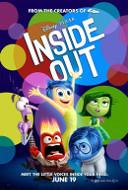 1
1


July 25, 2007 1:27 pm
This past Monday I attended the Games in Education Symposium in Troy, NY. The event, which was put on by 1st Playable Productions and WMHT, offered a chance for educators and developers alike to rub elbows, share experiences and insight, and exchange ideas about the future of game-based learning, both in and out of the classroom.
In some ways, it seems as though the state of games in education has taken a step back since its heyday, when classics such as The Oregon Trail and Where in the World is Carmen Sandiego? conquered classrooms alongside a bevy of other high quality, albeit slightly less ubiquitous, titles like Lemonade Stand and Number Munchers. Even with the unabashed success of Brain Age, the stigma that the modern game industry associates with so-called "edutainment" products remains on par with the stigma assigned to most other kinds of video games within the culture at large. Some would even go so far as to argue that the recent "Serious Games" movement is nothing more than a semantic sidestep intended to avoid the prevalent disdain for the "spoonful of sugar" methods that have often characterized the worst aspects of previous educational efforts. But if games and education really are two great tastes that taste great together, why do those of us within the industry feel the need to disguise our own efforts to combine the two? Have learning games truly plummeted so far from grace that even those who create them are wary of admitting to it?
Now that I've painted an appropriately dire backdrop, allow me to share the good news: having returned from the symposium, I am pleased to report that the rumors of educational gaming's demise have been greatly exaggerated. In fact, the aforementioned "fall from grace" as perceived by many developers (including myself) is actually less of a decline and more of a diaspora. The ingenuity and variety of approaches displayed by the participants was truly inspirational.
On the academic side, there were games dealing with such diverse subject matter as epidemiology and scientific inquiry (River City Project), constructivist learning and genetics (SciCentr), history (Freedom Fighter 56), politics and diplomacy (Making History: The Calm & The Storm), and, of course, mathematics and literacy (Dimension M, Labyrinth).
Commercial developers haven't been slouching either, as evidenced by playable demonstrations covering topics which included language and skill training (Bookworm Adventures, Typer Shark), mathematics and reasoning (Brain Age, Big Brain Academy), science and creativity (Whyville, Armadillo Run), exercise and rhythm (Dance Dance Revolution, Wii Sports), and historical simulation (Civilization IV).
As a developer, my main interest in attending this event stemmed from a desire to learn more about the academic vantage point. How do the goals, assumptions, and concerns of, say, a middle school teacher contrast with those of the average game creator? Assuming there are some gaps between them, where do these separate contexts align? Do they commingle smoothly and naturally, or are there a few bumps in the road?
In a speech at this year's Game Developer's Choice Awards, Greg Costikyan discussed the innate potential of games to illuminate a subject in ways that are "complimentary to, and different from" text. This topic was a recurrent theme at the symposium, where much of the conversation centered on the inherent challenges of incorporating games within traditional curricula. Current methods typically provide an oily integration at best, often alternating between what Education Arcade Creative Director Scott Osterwall described as the two polar extremes of "just let them play games" or "stuff educational content in."
The need for a more nuanced approach was also a concern of Muzzy Lane Sales & Marketing VP David Martz, who highlighted the usefulness of games in getting a conversation started, but stressed that teachers still need to be present to help direct that conversation in a way that effectively conveys the desired knowledge. In an echo of the movement toward abdication of authorship that is rapidly gaining purchase among game developers, Ocoee Middle School Principal Katherine C. Clark's keynote address also urged teachers to embrace the role of "the guide on the side" as an alternative to their more traditional function as "the sage on the stage."
One of the most surprising and compelling examples of using games as a catalyst for discussion was provided by Brock Dubbels, a Minneapolis Public School Teacher who uses ostensibly non-educational games to bolster debate and critical thinking skills among his students. By encouraging them to bring in their own games from home for group play and analysis, Brock said he was able to engage students much more actively in subjects such as genre studies and dialogic reading. The key, he said, is to honor the activities that students find meaningful. Brock also expressed a fervent belief in the educational value of all games, even going so far as to cite raid planning in World of Warcraft as a way of learning valuable skills such as teamwork and hypothesis formation.
In the end, I left the symposium feeling encouraged about the future of both games and education. Still, there are clearly a few hurdles left to overcome before true harmony between the two worlds can be achieved. As developers, we need to work to dispel the negative connotations that continue to haunt educational software within our industry. In addition, we must strive to educate teachers, many of whom are "digital immigrants," about the importance of technology, and to help them overcome the challenges they face when attempting to integrate games within the scholastic environment. For now, the best remedy for these problems is to foster communication between developers and educators, and events like this are an integral part of that.








